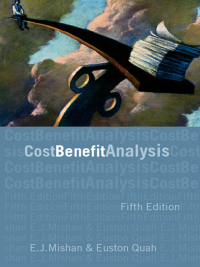Answered step by step
Verified Expert Solution
Question
1 Approved Answer
Please note for transaction m that the bad debt expense needs to be calculated The following data were selected from the records of Tunga Company

Please note for transaction m that the bad debt expense needs to be calculated
The following data were selected from the records of Tunga Company for the year ended December 31, 2021: Balances at December 31, 2020 Accounts receivable (various customers) Allowance for doubtful accounts $115,000 4,000 The company sells merchandise for cash and on open account with credit terms 2/10, n/30. Assume a unit sales price of $500 in all transactions, and use the gross method to record sales revenue. The following transactions occurred during 2021: a. Sold merchandise for cash, $234,000. b. Sold merchandise to R. Agostino on open account for $11,500. c. Sold merchandise to K. Black on open account for $25,000. d. Two days after purchase, R. Agostino returned one of the units purchased in (b) and received account credit. e. Sold merchandise to B. Assaf on open account for $26,000. f. R. Agostino paid his account in full within the discount period. g. Collected $98,000 cash from customers for credit sales made in 2020, all within the discount periods. h. K. Black paid the invoice in (c) within the discount period. i. Sold merchandise to R. Fong on open account for $17,500. j. Three days after paying the account in full, K. Black returned seven defective units and received a cash refund. k. Collected $6,000 cash on an accounts receivable for sales made in 2020. The amount was received after the discount period. 1. Wrote off an old account of $3,000 after deciding that the amount would never be collected. m. The company estimates that 4 percent of the accounts receivable at December 31, 2021, will be uncollectible in the future. Required: 1. Using the following categories, indicate the dollar effect of each listed transaction, including the write-off of the uncollectible account and the adjusting entry for estimated bad debts (ignore cost of sales). The effects of the first transaction are shown as an example: (Enter any decreases to account balances with a minus sign. In addition, enter all cells which have no change as a ZERO (0)) Sales Revenue Sales Discounts (taken) Sales Returns and Allowances Bad Debt Expense $ b 0 C. 01 0 0 0 0 500 01 0 0 d. e. 0 f. 234,000 11,500 25,000 0 26,000 0 0 0 17,500 0 0 0 0 g 0 0 0 h. 0 1. 0 0 220 2,000 5001 0 (70) 0 0 0 2,650 $ 0 3,500 0 j. Ik. 0 0 1. 0 0 0 314,000 $ 0 0 4,000 $ $ 0 2. Prepare the journal entries for these transactions, including the write-off of the uncollectible account and the adjusting entry for estimated bad debts. (If no entry is required for a transaction/event, select "No journal entry required" in the first account field.) View transaction list X 1 Record sale of merchandise for cash. 13 > 2 Record sale of merchandise to R. Agostino on open account. 3 Record sale of merchandise to K. Black on open account. 4 Record the return of one unit purchased by R. Agostino. edit 5 Sold merchandise to B. Assaf on open account. 6 Record collection in full from R. Agostino within the discount period. 2. Prepare the journal entries for these transactions, including the write-off of the uncollectible account and the adjusting entry for estimated bad debts. (If no entry is required for a transaction/event, select "No journal entry required" in the first account field.) View transaction list X 7 Record collections on account within the discount period. 13 > 8 Record collection from K. Black in full within the discount period. 9 Record sale of merchandise to R. Fong on open account. 10 Record the return of seven defective units by K. Black. edit 11 Record collection on account after the discount period. 12 Record the write-off of Accounts receivable as uncollectible. 2. Prepare the journal entries for these transactions, including the write-off of the uncollectible account and the adjusting entry for estimated bad debts. (If no entry is required for a transaction/event, select "No journal entry required" in the first account field.) View transaction list X 8 Record collection from K. Black in full within the discount period. 13 > 9 Record sale of merchandise to R. Fong on open account. 10 Record the return of seven defective units by K. Black. 11 Record collection on account after the discount period. edit 12 Record the write-off of Accounts receivable as uncollectible. 13 Record entry to adjust the balance of the Allowance for doubtful accounts and record bad debt expense for the year. 3. Show how the accounts related to the preceding sale and collection activities should be reported on the statement of earnings for 2021. Statement of earnings (partial): $ 0 Operating expensesStep by Step Solution
There are 3 Steps involved in it
Step: 1

Get Instant Access to Expert-Tailored Solutions
See step-by-step solutions with expert insights and AI powered tools for academic success
Step: 2

Step: 3

Ace Your Homework with AI
Get the answers you need in no time with our AI-driven, step-by-step assistance
Get Started


